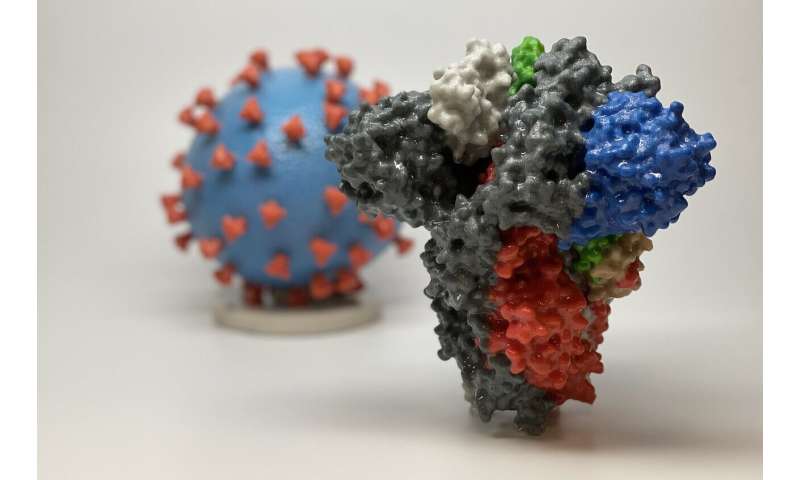
Researchers from Stanford University explain that patients on dialysis represent an important population to study general COVID-19 seroprevalence. These patients already undergo routine, monthly laboratory studies and represent similar risk factors to contracting COVID-19 as the general population, including age, non-white race, and poverty. Unlike community-based surveys, where a select group may show up for or agree to be tested and require a significant on-the-ground effort to launch, patients on dialysis are amenable to random sampling as part of their routine care.
The study follows previous findings from recent seroprevalence studies of highly affected countries and regions (e.g. Wuhan, China, and Spain), which have shown that despite the intense strain on resources and unprecedented excess mortality, rates of seroprevalence at the population level remain low. Other seroprevalence studies of the U.S. population have been restricted to regional hotspots, such as New York City.
“Not only is this patient population representative ethnically and socio-economically, but they are one of the few groups of people who can be repeatedly tested. Because renal disease is a Medicare-qualifying condition, they don’t face many of the access-to-care barriers that limit testing among the general population,” said Shuchi Anand, MD, Director of the Center for Tubulointerstitial Kidney Disease at Stanford University and lead author of the study. “We were able to determine—with a high level of precision—differences in seroprevalence among patient groups within and across regions of the United States, providing a very rich picture of the first wave of the COVID-19 outbreak that can hopefully help inform strategies to curb the epidemic moving forward by targeting vulnerable populations.”
The study demonstrates an urgent need for public health efforts dedicated to controlling COVID-19 to continue, with more attention paid to some of the highest risk communities the researchers identified: majority Black and Hispanic neighborhoods, low-income neighborhoods, and densely populated metropolitan areas.
Findings showed that, compared to the majority non-Hispanic white population, people living in predominantly Black and Hispanic neighborhoods experienced a two- to four-times higher likelihood of COVID-19 infection (rates of COVID-19 infection were 11.3% to 16.3% in Black and Hispanic neighborhoods, compared to 4.8% in the majority non-Hispanic white population) while poorer areas experienced a two-times higher likelihood, and the most densely populated areas showed a 10-times higher likelihood of SARS-CoV-2 seropositivity.
In the study, researchers tested the seroprevalence of SARS-CoV-2 antibodies in a randomly selected representative sample of 28,503 patients to provide a nationwide estimate of exposure to SARS-CoV-2 during the first wave of the pandemic. Of the sample population, 89% were tested in the first two weeks of July. The sampling was representative of U.S. patients on dialysis distributed by age, sex, race, ethnicity, and region—with the exception that these sampled patients were less likely to be Non-Hispanic Black compared to the general U.S. adult population. Patients in the sample lived in 46 states and 1,013 U.S. counties.
Accounting for the externally validated test sensitivity, seroprevalence ranged from 8.2% to 9.4% in the sampled population. Researchers estimated the SARS-CoV-2 standardized seroprevalence in the U.S. population to be approximately 9.3%. The authors also found significant regional variation from less than 5% in the western United States to greater than 25% in the northeast.
By comparing seroprevalence data from their study with case counts per 100,000 population from Johns Hopkins University, the authors estimate that 9.2% of seropositive patients were diagnosed.
The authors note several limitations, including that the process of undergoing in-center hemodialysis might include the use of public or non-public shared transportation to and from the facility, thus increasing the potential for exposure. Conversely, because patients on dialysis are less likely to be employed and more likely to have restricted mobility, the data might underestimate overall seroprevalence in the general population. Finally, patients receiving dialysis may have more likely died or been hospitalized due to complications of SARS-CoV-2 infection. If so, these patients would not have been present for testing in the dialysis facilities, creating a survival bias and yielding lower estimates of exposure.
Despite these limitations, this study shows that a surveillance strategy relying on monthly testing of the remainder plasma of patients receiving dialysis can produce useful estimates of SARS-CoV-2 spread inclusive of hard-to-reach, disadvantaged populations in the United States. Such surveillance can inform disease trends, resource allocation, and effectiveness of community interventions during the COVID-19 pandemic.
“This research clearly confirms that despite high rates of COVID-19 in the United States, the number of people with antibodies is still low and we haven’t come close to achieving herd immunity. Until an effective vaccine is approved, we need to make sure our more vulnerable populations are reached with prevention measures,” said study author Julie Parsonnet, MD, a Professor of Medicine at Stanford University.
Source: Read Full Article
